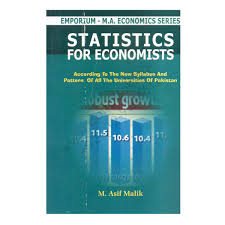
Course Outline
STAT-5123 Statistics for Economics-II 3 (3+0)
The aims of statistics are to provide methods of drawing valid inferences from samples. A major preoccupation of modern statistics is deciding what degree of reliance can reasonably be placed on particular samples. This course introduces these basic concepts. The foundational role of sampling, regression and hypothesis testing. In the mid-eighteenth-century statistics was the study of States - their populations, industries, natural advantages, and so forth. The course aims at familiarizing the students that Statistics is the science of learning from data to make an inference about a population of interest. Understand the concept of the sampling distribution of a statistic, and in particular describe the behavior of the sample mean. understand the logic and application of hypothesis testing and interpret a set of descriptive statistics and understand the limitations of each measure. To apply the appropriate inferential statistical technique to situations of questions, interpret the results of an inferential test and understand the limitations of each procedure, and compute descriptive and inferential statistics using a calculator and computer.
Contents
- Sampling
- Regression
- Standard deviation of regression or standard error of estimate.
- Coefficient of determination
- Correlation
- Multiple Regression
- Standard error of estimate of multiple regression.
- Coefficient of multiple determination and multiple correlation
- Hypothesis testing
- Probability and non probability sampling.
- Probability and random samples.
- Sampling distribution of a sample proportion.
- Sampling distribution of a variance
- Sampling distribution of differences between proportion.
- The one way analysis of variance.
- The Anova approach detailed.
- Chi square test, z-test, t-test
Recommended Texts
- Aczel, A. D. (1995). Statistics: Concepts and Applications. Richard D. Irwin. Inc., Chicago.
- Chaudhry, S. M. (2011). Introduction to statistical theory. Ilmi Kithab Khana.
Suggested Readings
- Chatfield, C. (1983). Statistics for technology: a course in applied statistics (Vol. 3). CRC Press.
- Peck, R., Olsen, C., & Devore, J. L. (2015). Introduction to statistics and data analysis. Cengage Learning.
- Bruce, B., & O’Connell Richard, T. (1997). Applied Statistics Improving Business Processes. In Library of Congress Publication Data (p. 386).


